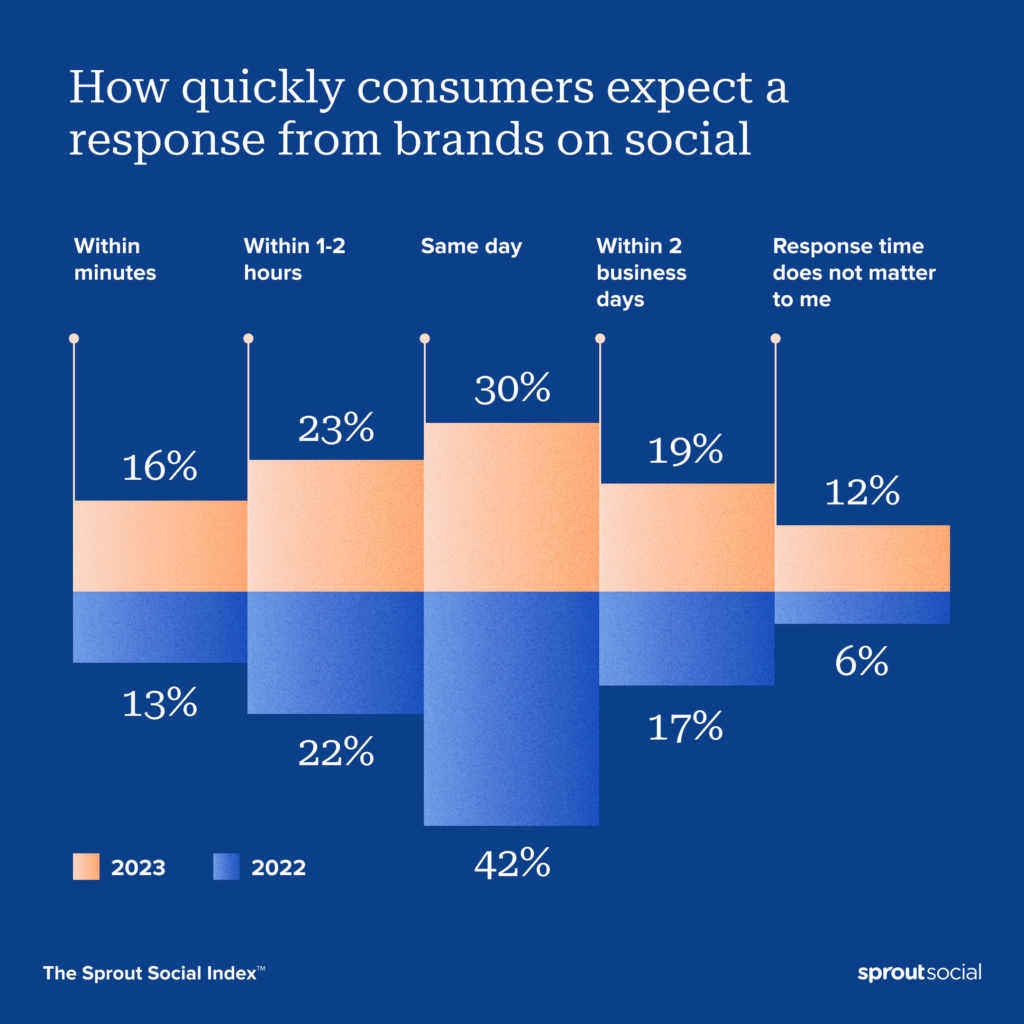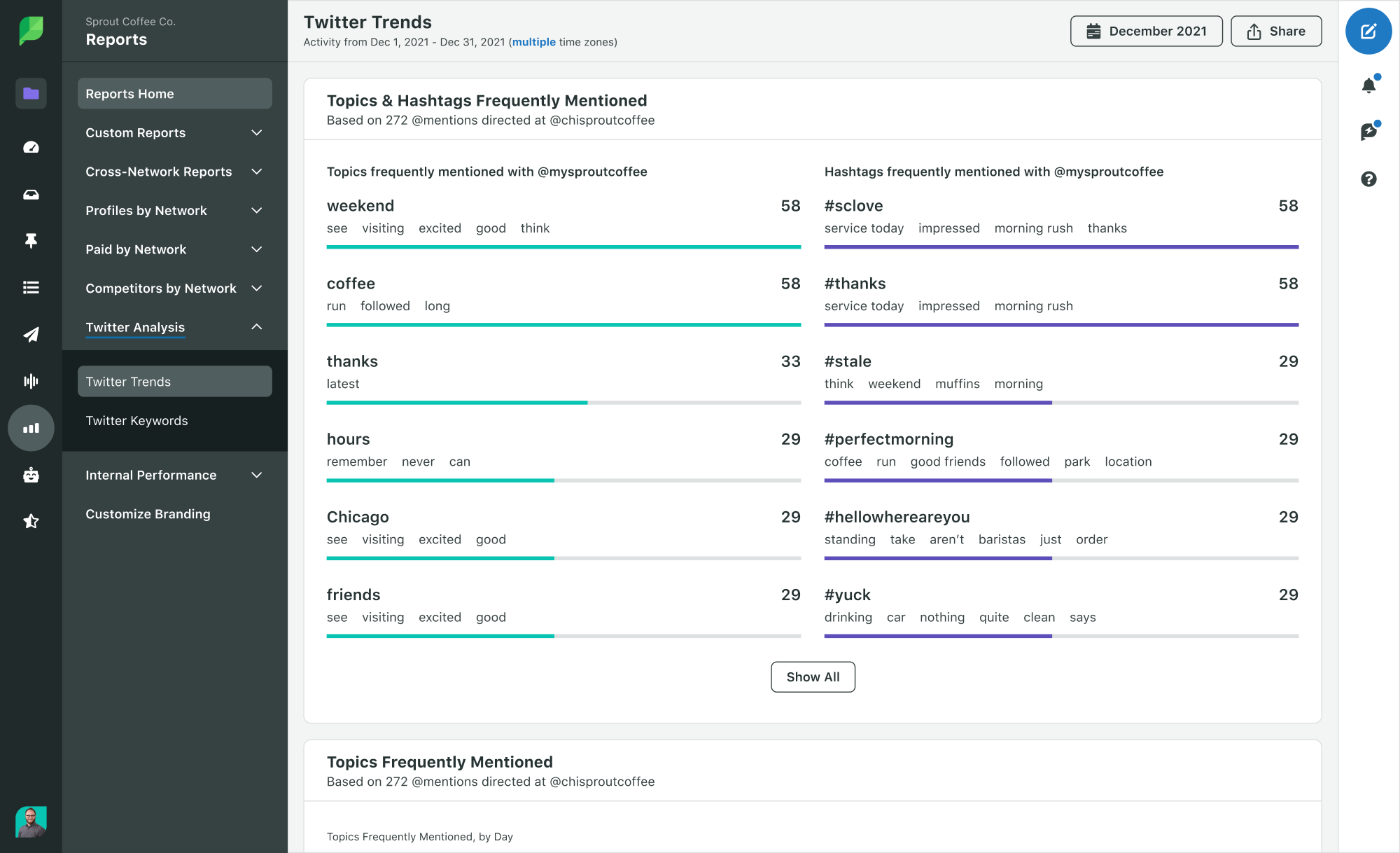Getting complaints about your business never feels great. They can also severely impact your reputation. Given the potential fallout, it’s understandable why you might want to avoid complaints altogether, let alone respond to them. However, complaint management can also be a growth opportunity, providing insights to improve your products, services or customer experience.
It’s also an opportunity to become the ‘hero’ in your customer’s story. Turning a negative situation into a positive outcome will help win their loyalty and maybe even earn your brand public praise on social media.
So, how do you manage complaints in a way that resolves your customers’ issues efficiently and effectively? In this article, we’ll provide a breakdown of a complaint management system and offer tips to improve your reputation management processes.
What is complaint management?
Complaint management is the process of handling customer complaints within an organization.
Successful complaint management is all about customer care. Promptly responding to, and addressing your customers’ specific issues can turn a negative experience into a positive one. It improves customer retention and satisfaction and, ultimately, protects your bottom line.
For example, Southwest Airlines’ quick response to a customer complaint about a long bag check line reassured the unhappy client they were committed to serving them as quickly as possible. In the end, the customer said the wait wasn’t too long and even praised the airline’s friendly employees.

What is the importance of a complaint management system?
Complaints happen. That’s the reality of running a business. But the way you respond to them makes all the difference. Mishandling complaints could harm your company even more than the complaint itself. A UK restaurant even made headlines for its owner’s heated responses to poor reviews, proving not all publicity is good publicity.
Some industries attract more complaints than others. From lost baggage to canceled trips, travel industry companies often deal with a lot of customer complaints. Used car dealers, home repair and health and wellness companies are also some of the most complained about companies.
The higher the volume, the more overwhelming it can be for your team, but a complaint management system helps your brand respond and engage with unhappy customers at scale. An effective system will accept, categorize and track customer complaints from initiation to resolution.
Using a complaint management system to scale also opens up more benefits and opportunities for your business, including:
Improved customer experience
Unhappy customers don’t like to wait. According to our Sprout Social Index ™, 69% of customers expect a response from brands on social within 24 hours. A complaint management system will quickly identify, categorize and organize complaints to solve customer problems fast, so your team can focus on executing a winning customer experience strategy.

Brand loyalty
A negative experience with your brand may deter some customers for good. Still, research shows a third (33%) of consumers would consider giving a company a second chance if they felt the brand sincerely tried to resolve the issue. Effective complaint resolution helps turn a displeased customer into a satisfied one, increasing their chances of becoming a repeat customer and fostering brand loyalty.
Identify repeat problems
Complaint management systems allow users to zoom out and identify patterns and repeated issues by organizing complaints in a centralized place. Once identified, companies can prioritize the most common issues and implement preventative measures to keep the complaints from coming up in the first place.
For example, social listening tools powered by conversational analytics help brands monitor hashtags and feedback to quickly identify negative comments and respond. Here is a report from Sprout’s Listening capability.

Brand protection
How you handle complaints directly affects your brand’s reputation. For example, if you’re too confrontational, defensive or dismissive, people will feel you’re not taking the feedback seriously and not considering their concerns.
However, responding calmly, empathetically and earnestly will build trust with current and potential customers. It will also demonstrate your commitment to resolving issues and delivering a positive experience.
Create engagement opportunities
From social media to review sites, there are many different ways for customers to provide feedback publicly. This can be a lot to keep up with, but it can also be an opportunity to engage with your customers directly.
Engaging in an open dialogue on social media or review platforms demonstrates transparency and responsiveness, which helps foster more personal relationships with your audience.
Reduce agent burnout
Let’s face it. It’s not easy for your customer service team to deal with unhappy customers all day. An organized complaint management system streamlines how they receive, categorize and address complaints—making it easier for your agents to respond and resolve issues.
Complaint management process
What is a complaint management process, exactly? In short, it’s a way to simplify your complaint management efforts to boost efficiency, provide clarity and reduce errors. Without a process, your customer service team may spend more time and energy than needed to resolve issues or potentially respond in a way that could do more harm than good due to a lack of information.
Here are the key steps to set up a standard complaint management process.
Categorize customer and complaint types
Generally, disgruntled customers and their complaints fall into specific categories. For example, Zendesk outlines five customer types: angry, impatient, vague, demanding and challenging. They’ve also identified a few common types of complaints:
- Long wait times
- Inability to speak with a human
- Unsupportive agents
- Needing to repeat information
- Inconvenient customer service hours
- Difficulty finding relevant information
- Lack of support channel variety
- Poor service or product
Categorizing customer and complaint types will help you identify the best response for the situation faster.
Set a policy for each type of customer and complaint
Once you’ve categorized your customer and complaint types, create guidelines for handling and resolving specific issues. For example, if your customers are upset about long wait times, you could direct them to self-service options where they can find solutions independently.
Ask probing follow-up questions for vague customers to get the necessary information. Active listening techniques can also aid understanding and ensure you’re on the same page. The more you standardize responses, the better.
Ticketing and tracking
A ticketing system is software that manages and tracks complaints from different sources and assigns them to the right people on your team. It automates your complaint management process by creating tickets based on pre-set rules, sending notifications and reminders, updating tickets and generating reports and insights.
The software enables your team to work together better, ensuring no complaint gets lost or left behind. It also helps you see trends, such as spikes or dips in complaints, how long it takes agents to resolve issues and how satisfied clients are with support interactions.
Training and team enablement
Set your customer service team up for success by providing them with training and resources to do their best work. Create training materials that cover the fundamentals of complaint management and outline company policies and procedures. Also offer customer service skills training that covers topics like active listening, empathy and problem-solving.
Role-playing exercises allow staff members to practice handling different types of complaints. Lastly, integrated complaint management software and searchable knowledge bases will ensure your agents have all the customer information they need in one central place.
Set benchmarks
Once you start collecting and analyzing complaint management data, create benchmarks to track your team’s efforts and set goals for improvement. Here are some common metrics you can track:
- Customer satisfaction (CSAT) score: Maintain a high CSAT score to gauge customer satisfaction with the complaint resolution process.
- Resolution time: Set a target for the average time to resolve a customer complaint.
- First-contact resolution rate: Measure the percentage of complaints resolved during the initial contact with the customer.
- Net promoter score (NPS): Assess how likely customers are to recommend the company based on their complaint resolution experience.
Strategies for improving complaint management systems
Since customer expectations and preferences will likely change over time, you should regularly review and update your complaint management system, exploring new solutions and implementing cutting-edge technologies to enhance your process and customer experience.
Here are a few different strategies to consider.
Embrace social listening
Sprout Social has social media listening solutions that enable you to track mentions, comments and conversations related to your brand on various social media platforms—even when your brand isn’t tagged. Leverage brand safety tools like our Message Spike Alerts to track increases in incoming messages and quickly identify and respond to negative feedback. You can also categorize complaints based on severity to prioritize responses.

Track online reviews
Customers often flock to review sites to complain about a company, but manually monitoring all the different review platforms is challenging. Sprout simplifies online review management by pulling reviews from Facebook, Google My Business, TripAdvisor and other online review sites into one platform. This feature lets you efficiently respond to complaints, filter reviews and assign tasks to other users.

Leverage AI
AI techniques like sentiment analysis give you a quick, data-informed pulse check on how your audience feels about your brand. Sentiment analysis tools process millions of comments in minutes, distilling the data into an accessible dashboard. Sprout’s tools can also analyze multilingual data, uncover trending topics across social media networks and review platforms with hashtags and keywords.

Ensure follow-ups
Tech integrations and social media automation can ensure timely responses to complaints without having a team of agents working 24/7. For example, in Sprout, the Bot Builder helps you create automated chatbots and our Saved Replies help your team respond to common complaints even faster.
Also integrate your customer service tools with a CRM to access and update customer profiles, histories and preferences. And a knowledge base or a self-service portal integration will equip your agents with relevant information, solutions or FAQs.
Develop a help center
Help your customers help themselves by creating a knowledge base. A knowledge base or help center is a dynamic tool for your customers to get support. Regularly update your knowledge database to include new information, resources or resolution strategies based on customer feedback.
For example, Sprout Social’s help center includes links to an introductory course to help people get up and running on our platform, social network-specific guides and much more. The knowledge base is also searchable so that users can find answers even faster.

Continuous training
As your company evolves and grows, your customer support team should too. Provide regular training to inform employees about the latest products, services and organizational updates. Training should also cover new policies or procedures due to changing regulations or industry standards. For example, if your team uses AI more in their processes, you might offer training to ensure your agents use it appropriately.
The future of complaint management
Positive feedback builds trust with your audience and boosts your brand reputation. But how you respond to negative reviews also says a lot about your business. It shows you’re committed to learning and growing and care about your customers.
However, in this digital age, speed is the name of the game. Depending on the nature of your business, you might get negative feedback at all hours, and your customers will still expect a timely response. This is where a comprehensive social media management platform like Sprout Social shines.
From review management to automation, AI to analytics, Sprout equips you with everything you need to respond and resolve issues at scale while maintaining your brand’s reputation.
Request a demo today to learn how Sprout can improve your complaint management processes.